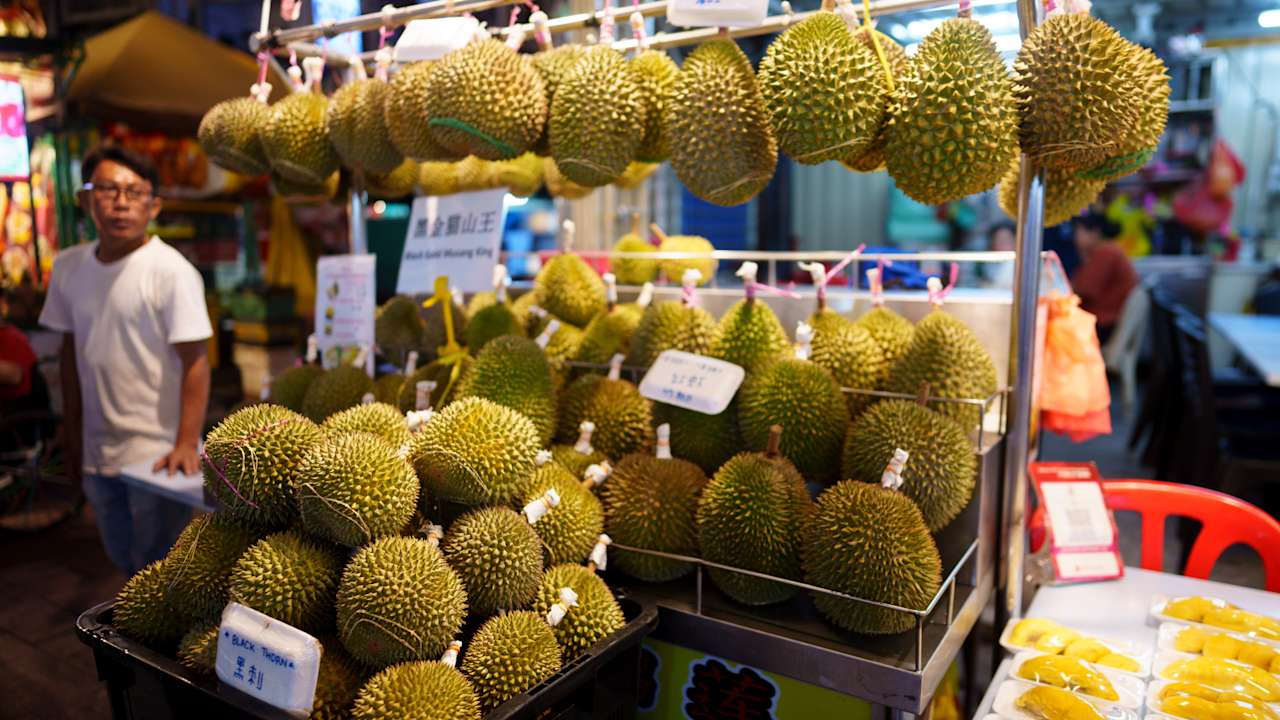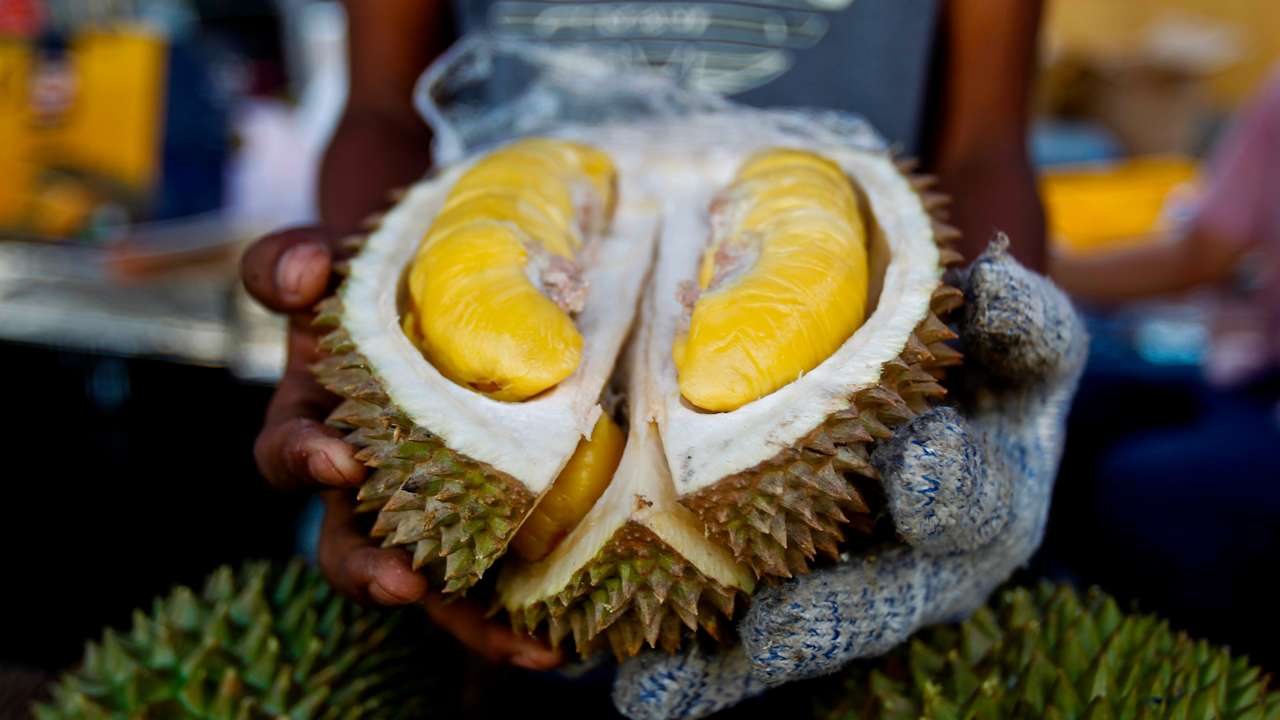Report by ITV News Digital Video Producer Isaine Blatry
Believe it or not, the famously pungent durian fruit is playing an unexpected role in driving up the price of your coffee.
While inflation and environmental factors have been major contributors to rising coffee prices, durian has added a surprising twist to the story.
Vietnam, one of the largest coffee producers in the world, has seen a growing number of farmers abandoning coffee in favour of durian. The reason? Durian is far more profitable.
This shift in agriculture is happening at a time when the global coffee market is already strained by environmental challenges, making your cup of coffee more expensive than ever.
Vietnam is known for producing robusta beans, a key ingredient in many instant and affordable coffee blends. But over the past few years, many farmers have turned their attention to growing durian instead.
The “king of fruits,” as durian is often called in southeast Asia, commands high prices in international markets, particularly in China, where demand is soaring.

Farmers who once relied on coffee crops for their income are now finding they can make significantly more money by growing durian.
This shift is contributing to a reduction in coffee production. In 2023, Vietnam’s coffee exports dropped by a staggering 50% according to the International Coffee Organisation.
Less supply means higher prices on the global market, which eventually trickles down to the consumer.
While durian is pulling farmers away from coffee, climate change is simultaneously wreaking havoc on coffee crops around the world.
Brazil, the largest coffee producer globally, has been hit hard by extreme weather. Unpredictable frost events, heatwaves, and prolonged droughts have drastically reduced crop yields.
In Vietnam, droughts have also affected coffee plantations, further diminishing the supply.
Coffee plants are highly sensitive to climate conditions, and as the planet warms, the regions where coffee can thrive are shrinking. A 2022 study predicted that by 2050, the land suitable for coffee farming could be reduced by as much as 50%.
This paints a grim picture for the future of coffee production, especially as global demand continues to rise.
As a result of these combined factors — durian-driven agricultural shifts, climate change, and dwindling coffee supplies — prices for coffee beans have soared to near-record highs in recent years.
This has inevitably pushed up the price of a cup of coffee on the high street. A £5 coffee in the UK or a $7 cup in the US may soon become the norm, especially in trendy cafés or speciality coffee shops.

It’s worth noting that the cost of coffee beans only makes up about 10% of the price you pay for your coffee. Other factors like labour, rent, and inflation also play a role in the price increase, but the rising cost of raw beans is making a noticeable impact.
While the global coffee industry is facing serious challenges, there is still some hope on the horizon.
If Brazil’s next coffee harvest is successful and weather conditions improve, prices could stabilise or even decrease slightly. However, the long-term outlook remains uncertain, especially as climate change continues to limit where and how coffee can be grown.
For now, your caffeine fix is likely to become more expensive and potentially harder to come by. Durian may be making headlines for its overpowering smell, but its impact on global agriculture is becoming just as significant — especially if you’re a coffee lover.
So, the next time you’re sipping on an expensive cup of coffee, remember: the durian may be partly to blame.
Follow STV News on WhatsApp
Scan the QR code on your mobile device for all the latest news from around the country




























